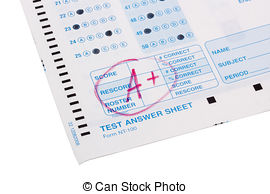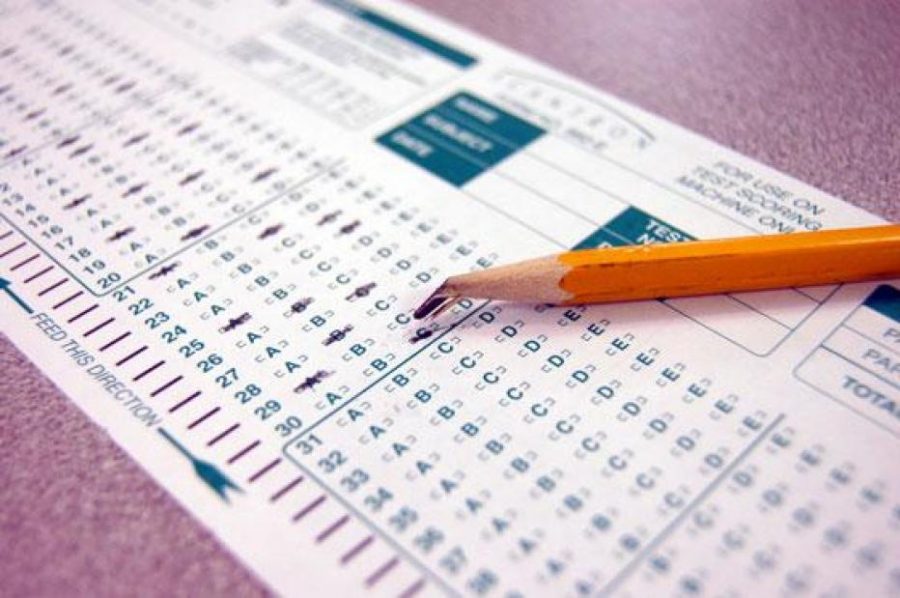Scantrons are more trouble than they are worth, and they should not be used for testing.
Why we shouldn’t use scantrons for tests
May 31, 2018
Scantrons are a method of grading multiple choice, or true or false tests. Scantrons are a common instrument used for testing in our high school. Most teachers hand out scantrons for tests or quizzes instead of having to manually grade handwritten answers. Scantrons are also partially used for midterms and finals.
While some may not mind using scantrons, or enjoy them, I personally don’t like scantrons. They offer a faulty system of grading, and inconvenience.
A students worst nightmare when testing is filling out the wrong bubble on a scantron. Like most students, when I don’t know an answer on a test, I skip it and move on to another question. Skipping questions while using a scantron can and will break you. I remember one time during my freshman year, I was taking a history test, which I studied hard for. As I was going through the test, I came across a question that I didn’t know the answer to, so I skipped it. After I finished the test, and came back to the question, I went to fill out my newfound answer and saw that the scantron had an answer filled in already. I accidentally put the answer to the following question (the one after the question I skipped) in the wrong space. So I then had to spend ten extra minutes fixing all of the answers after that one. Good thing I marked my answers on the actual test because if not, I would have been too deep in panic attacks to pull myself together and basically retake the test.
Though some scantron issues are human error, the machine itself isn’t exactly state of the art.
The actual scantron machine has a tendency to mark correct answers as wrong. On a few occasions, the scantron has marked my (correct) answers wrong, and significantly lowered my score. The only good thing about the incorrect grades is that they are usually uniform, so if it marked my right answer wrong, it did the same for other students. Another issue with scantrons is that they can’t tell whether the bold colored in bubble, or the faded, barely visible smudge is the answer.
Scantrons aren’t necessary, and make testing even more difficult. They may make things easier for teachers, but are a big pain for students.
Why Scantrons should be used in testing

Photo Credit: Can Stock Photo
While testing is commonly performed directly on the exam paper, many teachers opt to use Scantrons for multiple choice sections. Scantron paper requires the student to darken in bubbles of the multiple choice answers they have chosen, and are subsequently run through a machine where they can be graded according to a selected algorithm. Though some may argue that Scantrons are bothersome or more trouble than they are worth, I believe that they are beneficial in the long run.
For one, Scantrons make the grading process immensely easier on the teacher’s behalf. It doesn’t take a rocket scientist to run papers through a machine, which allows the teacher to grade the exams quickly and efficiently so that they can move onto new topics and grading sooner.
As a student myself, I can easily say that I prefer using scantron papers because of how quickly my grades are added into the gradebook. Coming from an honors student, I know the stress of desperately awaiting grades on tests where I am unsure of my performance. Pass? Fail? In my experience, these questions are agonizing, especially when days turn into weeks of anxiously pending the outcome. Luckily, scantrons eliminate the prospect of not knowing my grade after days, and allow my teachers to upload the results within hours of taking the exam.
Aside from the benefit of timeliness, the use of Scantrons can make even taking the exam simpler for the student. Personally, I relish the moment when my teacher announces that our test will be multiple choice, because I know that ultimately I have a chance at performing better than if I were to answer open-ended questions. For me, multiple choice questions eliminate insecure answers, because I know that I have at least a 25% chance of the correct answer even if it is just a guess.
Scantrons add onto the benefit of multiple choice questions by encouraging teachers to format their tests in multiple choice, as they are much easier to grade. Consequently, this makes the student’s exam-taking easier, as they can feel more confident in their answers and have a greater chance of answering correctly.
While Scantrons may seem inconvenient due to possible technical errors, overall, they create a win-win situation for both teachers and students.
